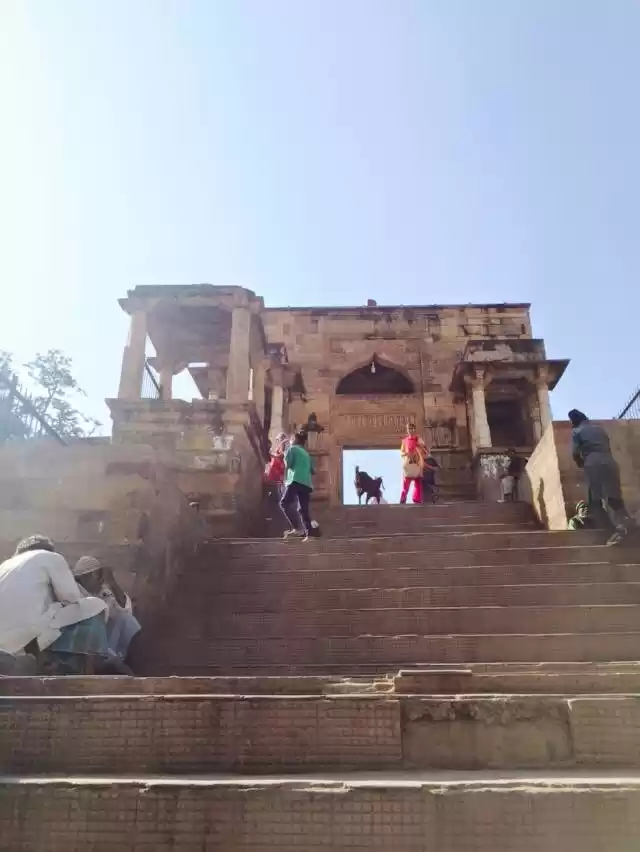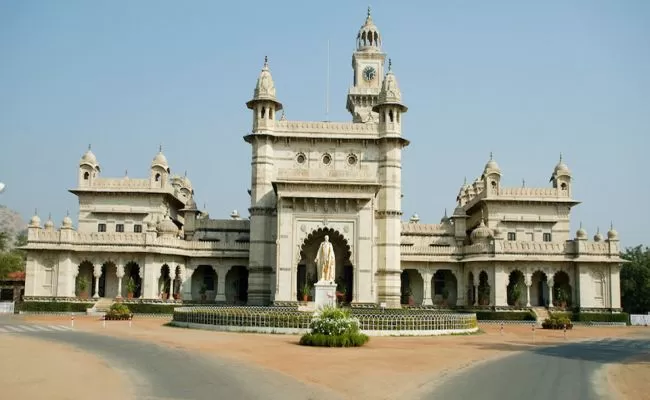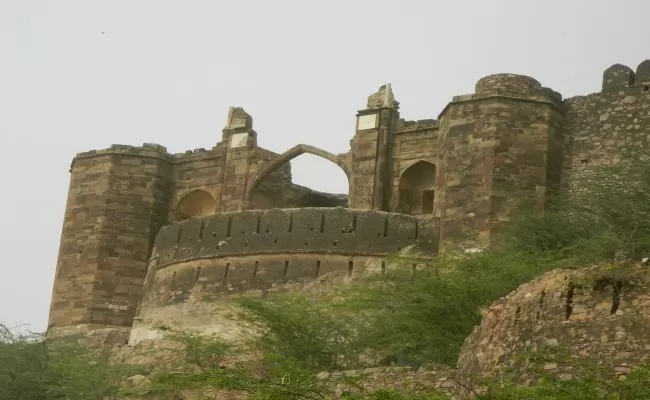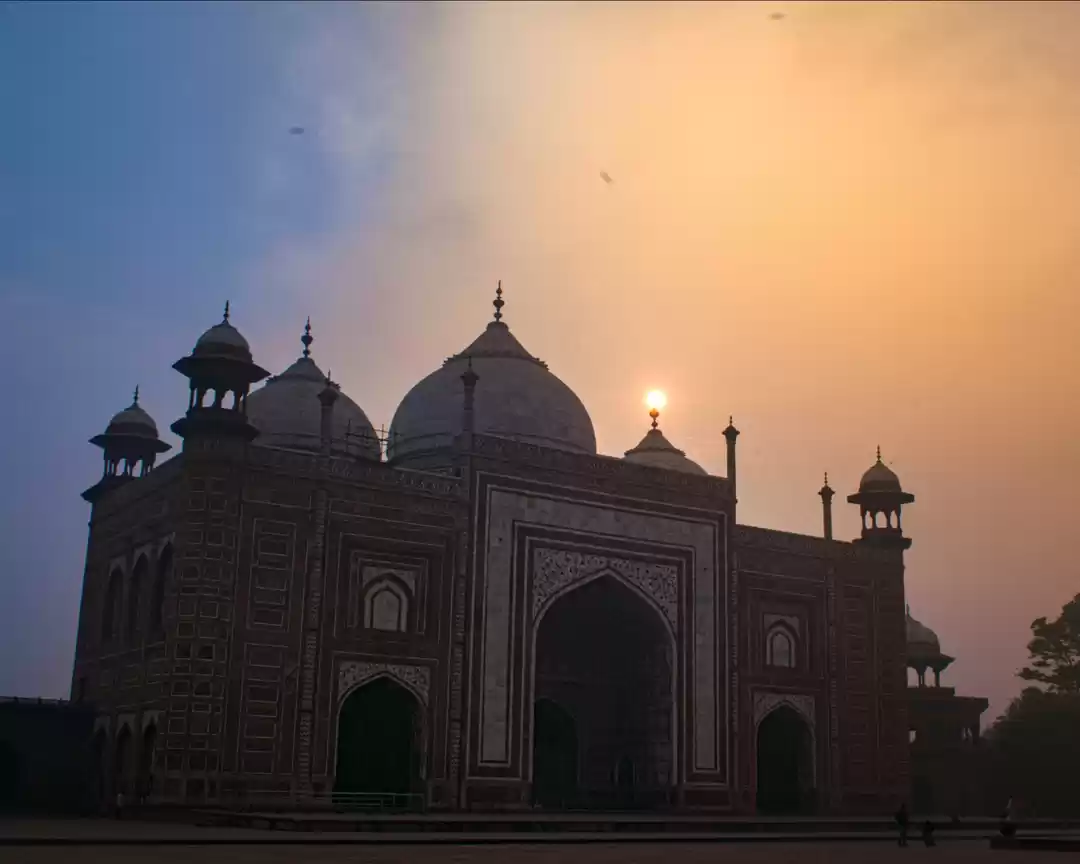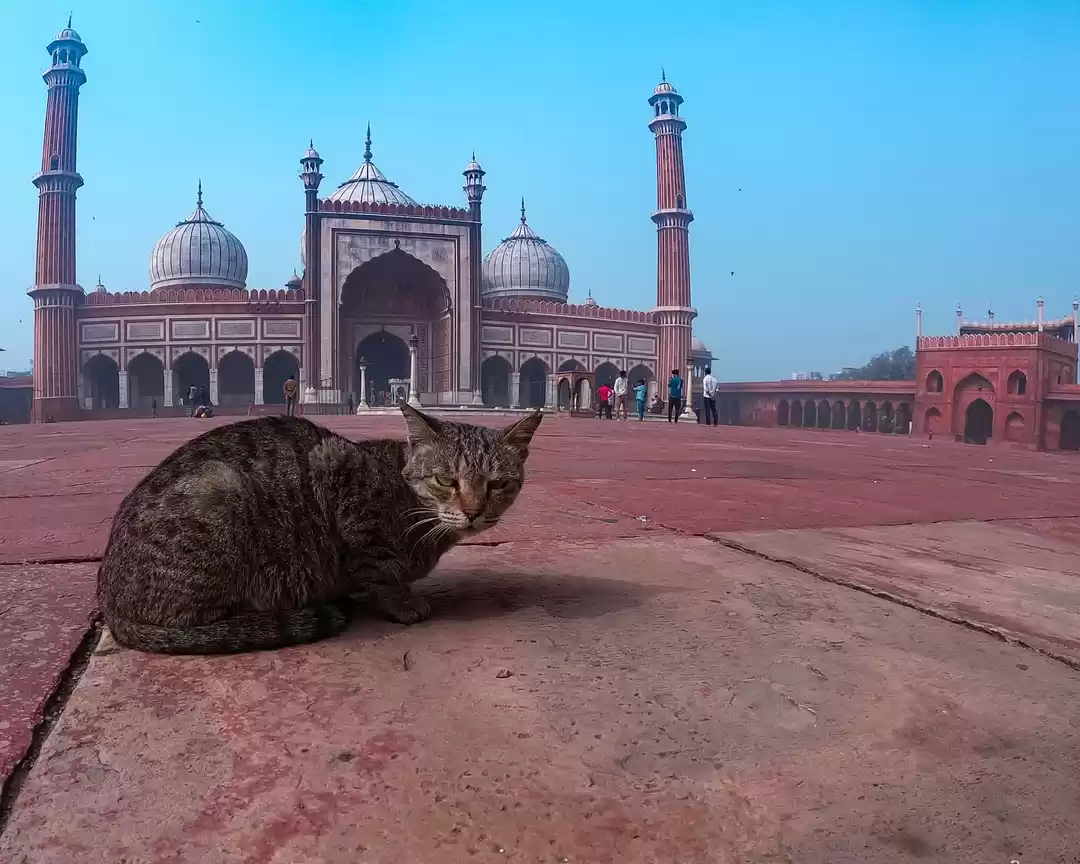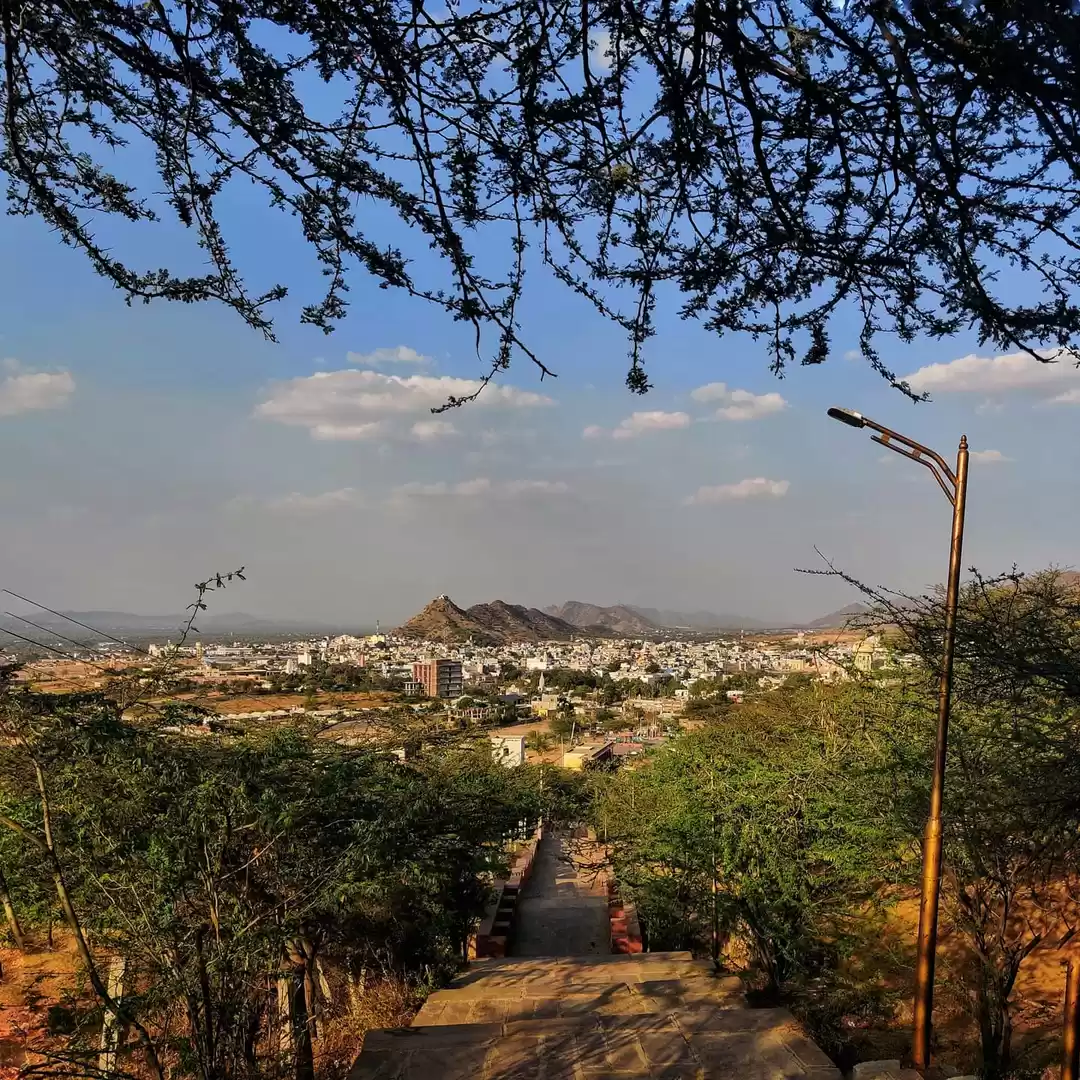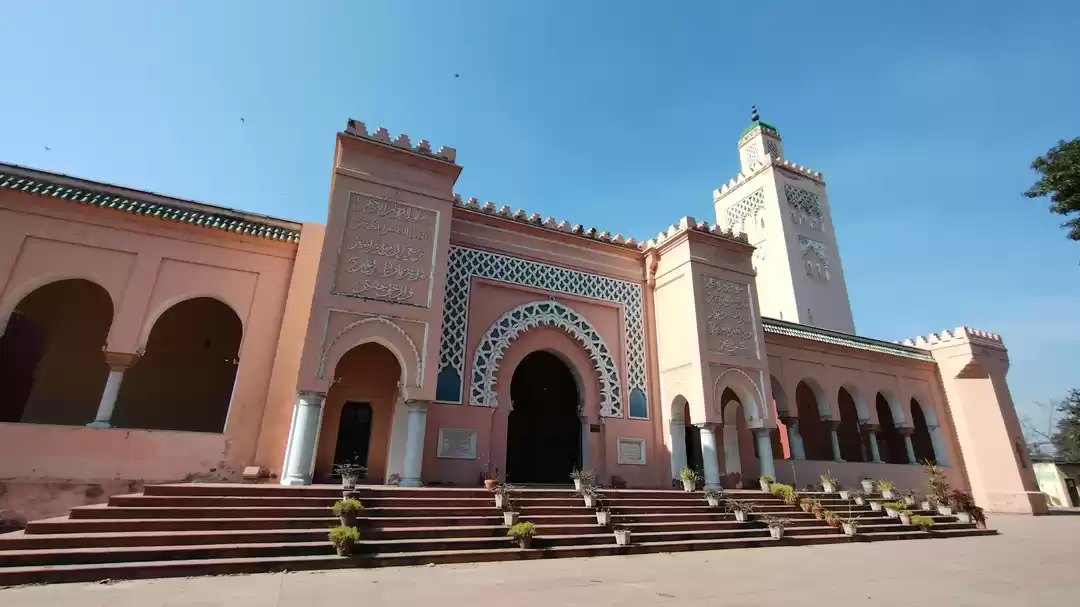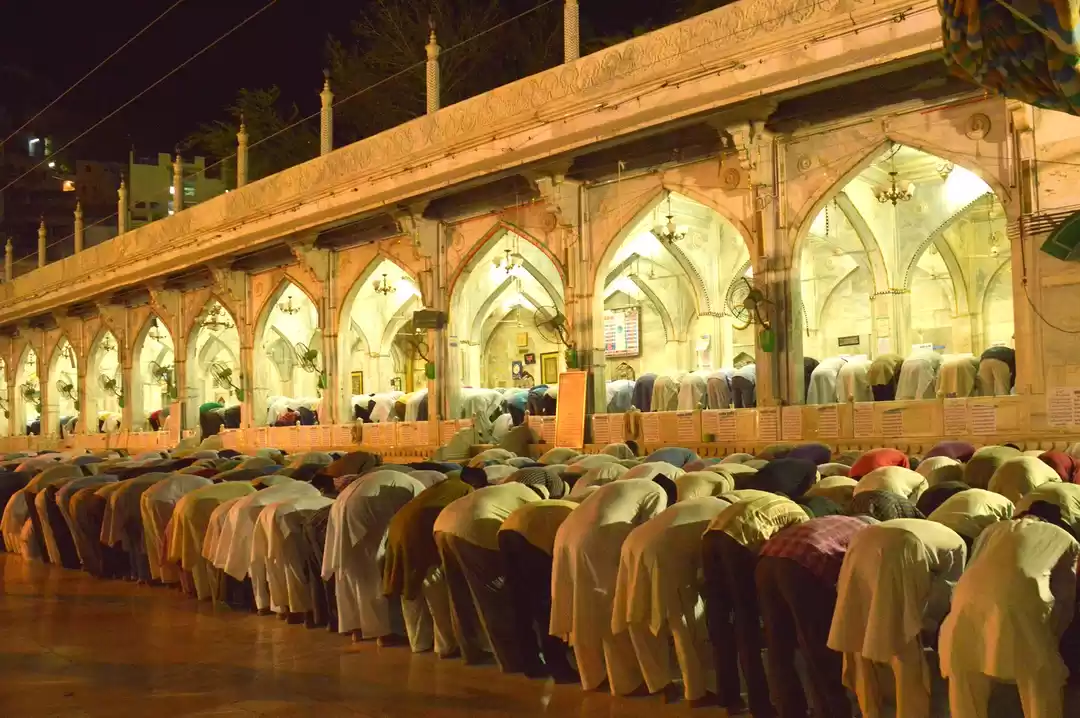Are you looking for a unique and fascinating destination to explore in India? Do you want to witness the beauty and diversity of Indo-Islamic architecture? If yes, then you should definitely visit Adhai Din ka Jhopda, a historical mosque in Ajmer, Rajasthan, India. This mosque is one of the oldest and most remarkable examples of Indo-Islamic architecture in the country.
It was originally a Sanskrit college that was converted into a mosque by Sultan Mohammed Ghori in the 12th century. It has a rich and intriguing history, a stunning and intricate architecture, a profound and symbolic significance, and many legends and stories associated with it.
In this article, we will tell you everything you need to know about Adhai Din ka Jhopda, and why you should add it to your bucket list.
What is Adhai Din ka Jhopda?
Adhai Din ka Jhopda is a phrase that means “shed of two-and-a-half days” in Hindi. It is the name given to a historical mosque in Ajmer, Rajasthan, India. The name comes from a legend that says that the mosque was built in just two-and-a-half days by Qutub-ud-Din-Aibak, who wanted to impress his master Sultan Mohammed Ghori. However, some historians believe that the name refers to a two-and-a-half day fair that was held near the mosque every year.

The mosque is also known as Adhai Din Ka Jhonpra, Arhai Din ka Jhompra or Dhai Din ki Masjid. It is located near Anasagar Lake in Ajmer, which is about 135 km from Jaipur, the capital of Rajasthan. The mosque is one of the oldest and most remarkable examples of Indo-Islamic architecture in India. It was originally a Sanskrit college that was converted into a mosque by Sultan Mohammed Ghori in the 12th century. It reflects a blend of Hindu and Islamic influences in its design and decoration. It is a symbol of religious tolerance and harmony between Hindus and Muslims. It is also a heritage site that attracts tourists and pilgrims from all over the world.
What is the history of Adhai Din ka Jhopda?
The history of Adhai Din ka Jhopda dates back to the 7th century CE, when it was built as a Sanskrit college by King Vigraharaja IV, also known as Visaladeva Chauhan. The college was dedicated to Saraswati, the Hindu goddess of learning and wisdom. It was a magnificent structure with seven halls, each adorned with intricate carvings and sculptures.
However, in 1192 CE, Ajmer was invaded by Sultan Mohammed Ghori, who defeated Prithviraj Chauhan, the last Hindu ruler of the region. Ghori ordered his general Qutub-ud-Din-Aibak to demolish the college and build a mosque on its site. According to legend, Aibak completed the task in just two-and-a-half days, hence the name Adhai Din ka Jhopda. However, some historians dispute this legend and say that the mosque took much longer to build and was completed by Aibak’s successors.
The mosque was further expanded and beautified by Aibak’s successors, such as Iltutmish and Ala-ud-din Khilji. They added more domes, arches, pillars and minarets to the mosque. They also inscribed verses from the Quran and Persian poetry on the walls and ceilings of the mosque.
You may also like to read: Half a day in Ajmer - Four must visit places
What is the architecture of Adhai Din ka Jhopda?
Adhai Din ka Jhopda is a remarkable example of Indo-Islamic architecture, which combines elements from both Hindu and Islamic traditions. The mosque has a rectangular layout with a large courtyard in front and a prayer hall at the back. The prayer hall measures 58 meters by 27 meters and has 10 domes supported by 124 pillars. The pillars are made of stone and were taken from nearby Hindu temples. They are carved with floral patterns, geometric shapes and images of Hindu gods and goddesses.
The most striking feature of the mosque is its facade, which has a huge arched screen with five smaller arches on each side. The screen is decorated with intricate carvings and inscriptions in Arabic and Persian. The central arch has a beautiful calligraphic band that contains verses from the Quran. The other arches have floral motifs and geometric designs that resemble Islamic tiles. The screen also has two minarets on each side that rise above the roof level.
What is the significance of Adhai Din ka Jhopda?
Adhai Din ka Jhopda is not only a historical monument but also a sacred place for both Hindus and Muslims. The mosque is still used for prayers by the local Muslim community, especially on Fridays and during festivals. The mosque is also revered by the Hindus, who believe that the pillars of the mosque contain the power and blessings of their gods. Many Hindus visit the mosque to offer prayers and seek divine favors.
Adhai Din ka Jhopda is also a cultural treasure that showcases the rich and diverse history of India. The mosque is a testimony to the artistic and architectural achievements of the medieval period. The mosque is also a witness to the political and social changes that occurred in the region over the centuries. The mosque is a heritage site that attracts tourists and pilgrims from all over the world, who come to admire its beauty and learn about its history.
What are the legends of Adhai Din ka Jhopda?
Adhai Din ka Jhopda is surrounded by many legends and stories that add to its charm and mystery. One of the most popular legends is that the mosque was built in just two-and-a-half days by Qutub-ud-Din-Aibak, who wanted to impress his master Sultan Mohammed Ghori. According to this legend, Aibak used a magic potion that made the stones stick together without any mortar or cement. He also used the pillars from Hindu temples that were already present on the site. However, some historians dispute this legend and say that the mosque took much longer to build and was completed by Aibak’s successors.

Another legend is that the mosque was visited by many saints and mystics, who performed miracles and taught their followers there. One of them was Khwaja Moinuddin Chishti, the founder of the Chishti order of Sufism in India. He came to Ajmer in 1192 CE and stayed at Adhai Din ka Jhopda for a while. He preached his message of love and peace to both Hindus and Muslims. He also performed many miracles, such as curing diseases, feeding the hungry and controlling the weather. He is buried at the nearby Dargah Sharif, which is a famous pilgrimage site for Muslims.
A third legend is that the mosque was cursed by a Hindu priest, who was angry at the destruction of his temple by Sultan Mohammed Ghori. He cursed that whoever prayed at the mosque would die within two-and-a-half days. He also cursed that whoever tried to repair or renovate the mosque would face misfortune and calamity. According to this legend, many people who prayed at the mosque died soon after, and many rulers who tried to restore the mosque faced wars, rebellions and invasions.
Best Time To Visit
the best time to visit Ajmer is from October to March, which comprises the monsoons and winter season. The weather during this time is pleasant and ideal for sightseeing and exploring the historical and cultural attractions of Ajmer. The summer season from April to June is very hot and dry, and should be avoided unless you are planning to visit during the Urs festival, which is held in May.
The monsoon season from July to September brings some relief from the heat, but also makes the city humid and prone to waterlogging. However, some people prefer to visit Ajmer during this time as the city looks green and beautiful after the rains.
You may also like to read: A solo trip to ajmer sharif and pushkar
Some of the places to visit near Adhai Din ka Jhopda are:

Pushkar Lake:
This is a sacred lake for Hindus, who believe that it was created by Lord Brahma, the creator of the universe. The lake is surrounded by 52 ghats, where pilgrims take a dip to wash away their sins. The lake also hosts the famous Pushkar Camel Fair every year, which attracts thousands of visitors and traders. You can enjoy the scenic beauty and the cultural diversity of Pushkar Lake, which is about 8 km from Adhai Din ka Jhopda.

Nasiyan Jain Temple:
This is a beautiful temple dedicated to the first Jain Tirthankara, Lord Rishabhdev. The temple is also known as the Red Temple, because of its red sandstone exterior. The temple has a stunning hall, which displays a golden replica of the Jain concept of the universe. The hall is adorned with precious stones, jewels and paintings. You can marvel at the craftsmanship and the spirituality of Nasiyan Jain Temple, which is about 3.6 km from Adhai Din ka Jhopda.

Khwaja Gharib Nawaz Dargah Sharif:
This is the tomb of Khwaja Moinuddin Chishti, the founder of the Chishti order of Sufism in India. He was a revered saint and a mystic, who preached his message of love and peace to both Hindus and Muslims. The dargah is a popular pilgrimage site for Muslims, who come to seek his blessings and offer prayers. The dargah is also known for its architecture and its festivals, such as Urs and Qawwali. You can experience the devotion and the harmony of Khwaja Gharib Nawaz Dargah Sharif, which is about 300 meters from Adhai Din ka Jhopda.

Brahma Temple:
This is one of the few temples in India dedicated to Lord Brahma, the creator of the universe. The temple is believed to be more than 2000 years old, and has a unique four-faced idol of Brahma. The temple is also famous for its annual festival, which attracts thousands of devotees and tourists. You can witness the rare and ancient worship of Brahma Temple, which is about 8.3 km from Adhai Din ka Jhopda.
These are some of the places that you can visit near Adhai Din ka Jhopda in July. You can also explore other attractions in Ajmer, such as Ajmer-E-Sharif, Kishangarh, Merta City etc. Ajmer is a city that has a rich and diverse heritage, culture and religion. You will surely enjoy your trip to Ajmer and Adhai Din ka Jhopda.
How to visit Adhai Din ka Jhopda?
If you want to visit Adhai Din ka Jhopda, here are some tips for you:
The mosque is located near Anasagar Lake in Ajmer, which is about 135 km from Jaipur, the capital of Rajasthan. You can reach Ajmer by train, bus or car from Jaipur or other major cities in India.
The mosque is open from sunrise to sunset every day. The entry fee is Rs 10 for Indians and Rs 100 for foreigners. You can also hire a guide for Rs 50 to learn more about the mosque.
The mosque is a sacred place for both Hindus and Muslims, so you should respect their beliefs and customs. You should dress modestly, remove your shoes before entering the prayer hall, avoid taking photos inside the mosque, and refrain from making noise or disturbing others.
We hope you enjoyed reading this article about Adhai Din ka Jhopda. If you have any questions or comments, please feel free to share them with us below. Have you ever visited Adhai Din ka Jhopda? What did you like or dislike about it? Tell us your experience!


















